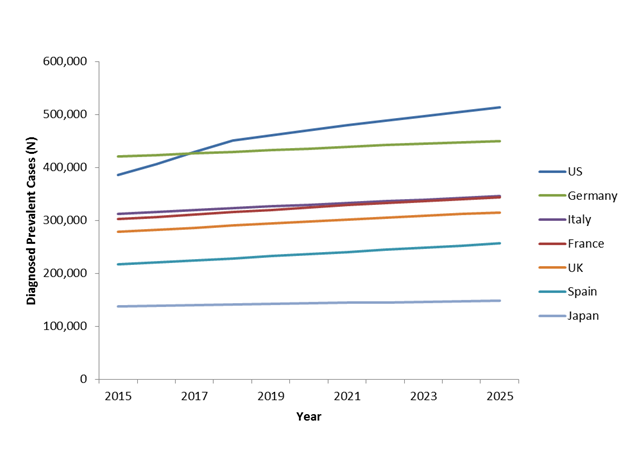
GlobalData epidemiologists forecast an increase in diagnosed prevalent cases of primary hyperparathyroidism (PHPT) in the seven major markets (7MM) (US, France, Germany, Italy, Spain, UK, and Japan) from 2015 to 2025. Compared with the other markets, the US is expected to see the most dramatic increase in PHPT cases.
Hyperparathyroidism (HPT) is a common endocrine disease caused by excessive parathyroid hormone in the bloodstream. HPT caused by intrinsic abnormal changes of the parathyroid glands is called PHPT.

Discover B2B Marketing That Performs
Combine business intelligence and editorial excellence to reach engaged professionals across 36 leading media platforms.
Figure 1 shows the change in diagnosed prevalent PHPT cases in the 7MM from 2015 to 2025. The number of cases in the 7MM is expected to increase from 2,055,167 in 2015 to 2,373,547 in 2025, at an annual growth rate (AGR) of 1.55%. All countries are expected to see an increase in diagnosed prevalent cases. In the EU and Japan, GlobalData epidemiologists believe that the prevalence will not change over time; therefore, the increase in cases can be attributed to the growth of the population at risk.

The US is expected to see an even greater increase in PHPT cases, from 385,833 to 513,509, at an AGR of 3.31%. In addition to population growth, this increase is driven by an expected increase in the diagnosed prevalence of PHPT based on analysis of historical data. From 2015 to 2025, the diagnosed prevalence in men and women in the US ages 20 years and older is expected to grow from 0.16% to 0.19%. This increase may be a result of improved diagnosis rates through more frequent blood screens.
PHPT is characterized by elevated serum calcium combined with high parathyroid hormone levels. Since PHPT is most commonly asymptomatic, it is often diagnosed after blood tests report high blood calcium levels. Previous studies have suggested that growth in PHPT prevalence may be caused in part by improved diagnosis rates and an increase in blood calcium testing. In countries where blood tests are less common, PHPT cases are typically diagnosed only after patients present symptoms. This means the number of diagnosed PHPT cases will continue to grow if biochemical testing continues to become more widely available.

US Tariffs are shifting - will you react or anticipate?
Don’t let policy changes catch you off guard. Stay proactive with real-time data and expert analysis.
By GlobalDataDetails about the trend analysis and other discussions of HPT epidemiology can be found in the EpiCast Report: Hyperparathyroidism – Epidemiology Forecast to 2025 and the EpiCast Model: Hyperparathyroidism – Epidemiology Forecast to 2025.





